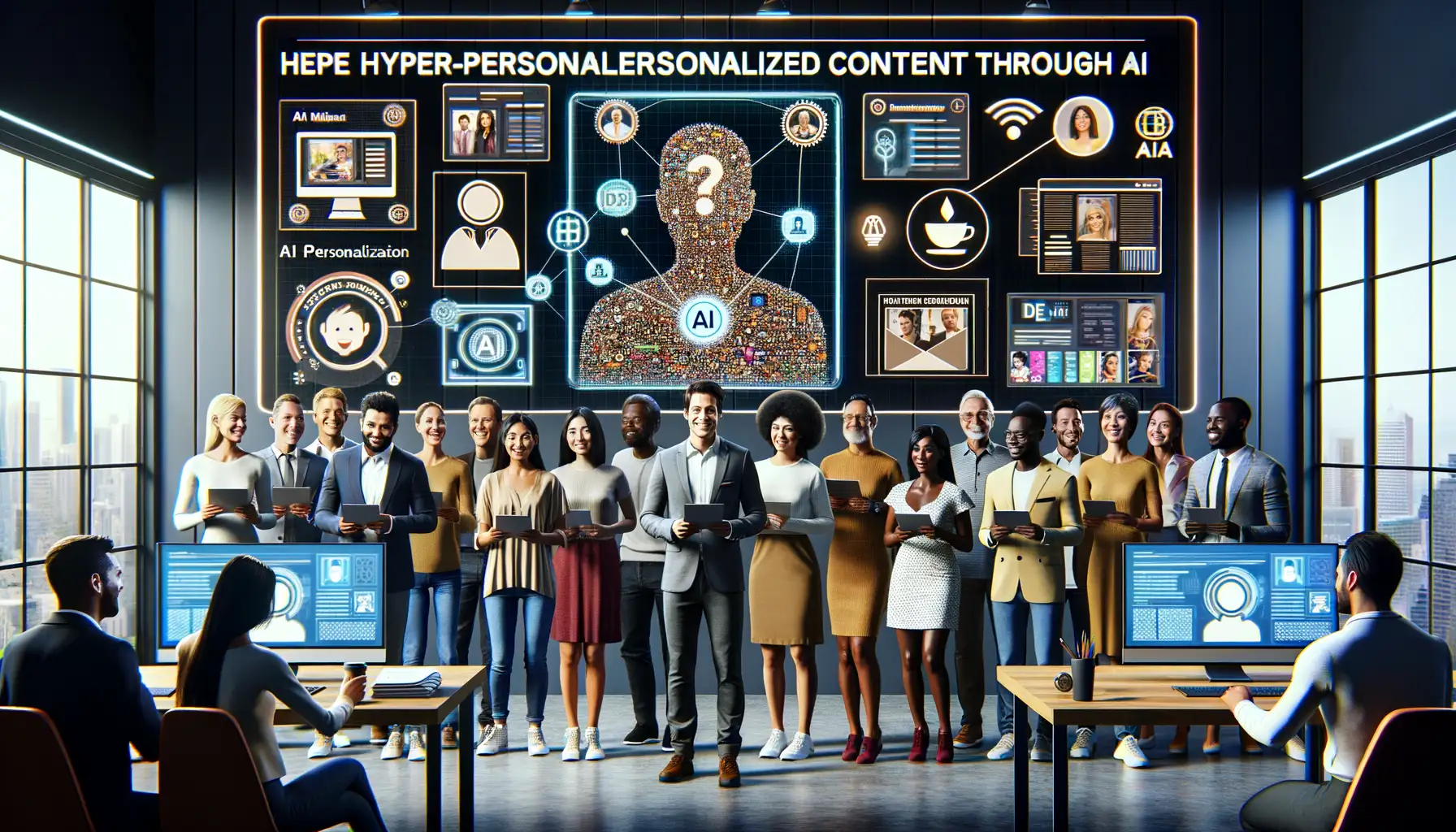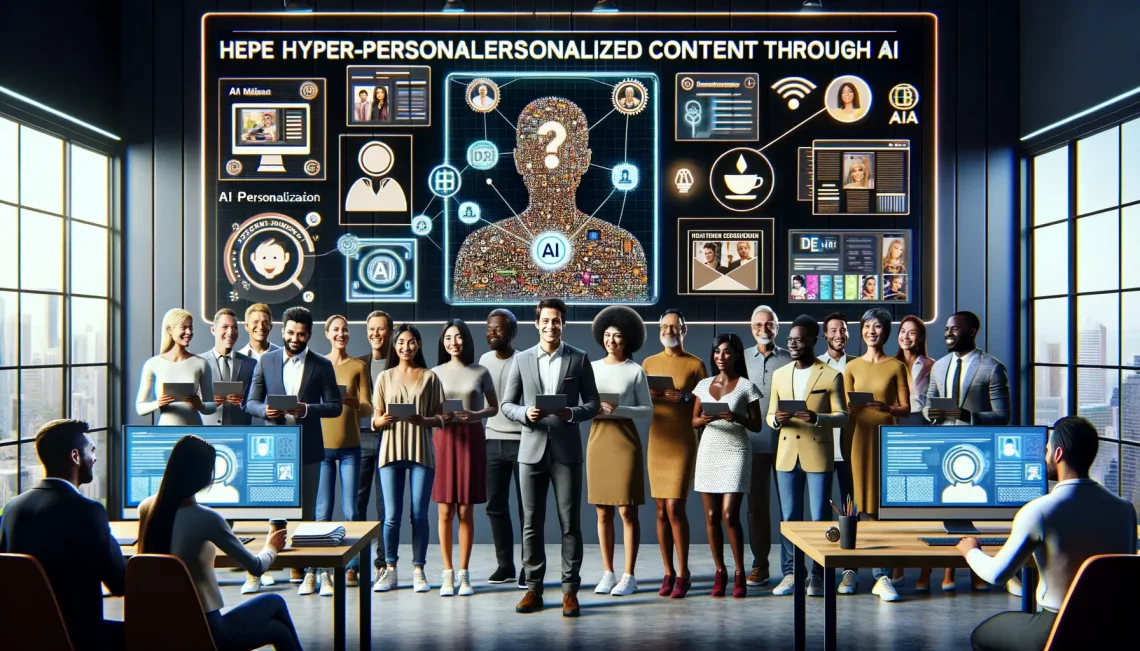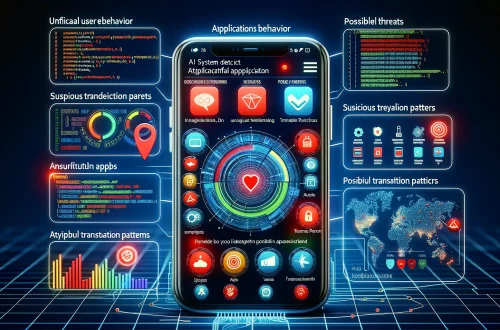Understanding the Concept of Hyper-Personalization with AI
What Makes Hyper-Personalization a Game-Changer?
Imagine opening an app and feeling like it “gets you” on every level. That’s the magic of hyper-personalization. It’s not just tailoring content based on broader demographics — it’s like crafting a digital fingerprint that matches your unique desires. Unlike traditional personalization, which might only consider your age or location, hyper-personalization dives deeper. It combines behaviors, preferences, real-time actions, and even intent to deliver content that feels like it belongs exclusively to you.
Let’s say you’re using a fitness app. Instead of offering random workout routines, hyper-personalization means the app suggests 20-minute HIIT workouts because it knows your busiest days are Tuesdays and Thursdays, tracks your heart rate trends, and notices how often you revisit strength training programs. It’s as if the app isn’t just smart; it feels intuitive.
This forward-thinking approach is powered by AI-driven technologies like machine learning algorithms and data analytics. They don’t just observe patterns — they anticipate needs with uncanny accuracy. Hyper-personalization doesn’t shout for attention; it whispers in your ear, “I know what you need.” Isn’t that a whole new level of connection?
Benefits of Incorporating AI for Hyper-Personalized Content

Why AI is a Game-Changer for Personalization
Imagine opening an app and feeling like it was designed just for you—every suggestion, every feature seems to *know* what you love. This isn’t magic; it’s the power of AI-driven hyper-personalization. With AI in play, you’re not just creating content—you’re building experiences tailored to every tap, swipe, or scroll.
AI enables apps to go beyond surface-level data. It dives into user preferences, behaviors, and interactions with laser-like precision. The result? You’re not spamming users with generic content; you’re offering little moments of delight, like a friend who always knows your favorite coffee order.
- Dynamic recommendations: AI can curate playlists, shopping suggestions, or reading lists that feel uniquely handpicked.
- Real-time updates: Users receive suggestions that change as their preferences evolve—no more stale guesses.
- Emotionally resonant engagement: Think push notifications that speak directly to someone’s interests, not their inbox clutter.
From Data to Connection: The AI Advantage
What really makes AI special is its power to translate raw numbers into meaningful human connections. For example, an online fitness app doesn’t just track workouts—it offers motivational challenges on the days you slack. A language-learning app might congratulate you just when it notices your engagement dipping. These thoughtful nudges keep users feeling seen and appreciated.
Incorporating AI is like hiring a team of infinite researchers and cheerleaders for your app. It adapts, predicts, and personalizes—not because it “should,” but because it wants your users to stick around, smile, and say, “Wow, this gets me.”
Steps to Implement AI in Developing Personalized App Content

Kickstarting Your AI-Powered Personalization Journey
Ready to dive into the world of AI-driven personalization? Here’s how you can start turning your app into a content-delivering magician built just for your users.
First, lay the foundation with solid data collection. Without data, AI is like a chef without ingredients. Use tools like surveys, app usage tracking, and even social media behavior. Gather insights about preferences, habits, and quirks—these are goldmines for crafting truly tailored content.
Next, choose an AI model that fits your vision. Think of it as finding the perfect dance partner: do you need something lightweight and nimble or a heavy-duty system for crunching massive datasets? If customization is your goal, explore options like machine learning algorithms or natural language processing (NLP).
- Use clustering algorithms to group users with similar preferences.
- Leverage recommendation engines to predict what users will love next.
Creating Dynamic User Experiences with AI
Once your AI system is ready, start tinkering! Integrate it into your app to create personalized recommendations, suggest relevant articles or products, and even customize design elements like themes or layouts. Why stop at “one-size-fits-all” when you can design experiences that feel uniquely human?
Finally, test, iterate, repeat. AI thrives on feedback! Monitor how users respond, fine-tune content suggestions, and teach your AI to be smarter than ever before. This isn’t just about building an app—it’s about creating connections wrapped in tech wizardry.
AI Tools and Technologies for Content Personalization

Transforming Content Tailoring with AI
Imagine opening an app and feeling like it “just gets you.” That’s the magic of using AI tools for hyper-personalized content—it’s like having a best friend who knows your taste in music, movies, or even what you’re craving for dinner. But behind this digital intuition lies an arsenal of cutting-edge technologies that make it all possible.
AI-powered personalization relies on tools that analyze user data, behaviors, and preferences to create a bespoke experience. Some popular options include:
- Recommendation Engines: Think Netflix suggesting your next binge-worthy series or Amazon predicting the perfect gadget for your needs.
- Natural Language Processing (NLP): Ever noticed how your favorite apps seem to speak your language? Tools like GPT-based models break down communication barriers by understanding context and tone.
- Behavior Analytics Software: These tools dive deep into user habits to predict future actions, helping create spot-on suggestions.
The Role of Machine Learning in Personalization
What really elevates these tools is their knack for learning over time. Machine Learning algorithms adapt to users like a coffee barista remembering your order after a few visits. A prime example is Spotify’s Discover Weekly, which crafts playlists based on listening patterns.
And don’t underestimate the power of predictive analytics. By processing a mix of historical data and real-time inputs, AI can anticipate what your audience might need before they even realize it themselves. That’s not just personalization—it’s digital clairvoyance!
Challenges and Best Practices for Leveraging AI in Personalization

Overcoming Roadblocks While Tapping Into AI’s Potential
Picture this: AI holds the key to unlocking the most personalized app experience imaginable. But here’s the twist — the journey isn’t without its hurdles. The first major challenge? Data, or as I like to call it, “the lifeblood of AI.” Without rich, high-quality, and diverse datasets, even the most advanced AI can fall flat. And then there’s privacy. Users crave customization but shudder at the thought of their data being misused. It’s like walking a tightrope: balance is everything.
Another curveball? The dreaded black-box issue. You know, where your AI spits out recommendations, but you’re left scratching your head why. Transparency matters, especially when customers expect apps to feel *human*.
So, how do we tackle these challenges? Start with clear data policies—no room for ambiguity. Want real results? Train your AI on inclusive, bias-free datasets. And don’t forget to stay transparent: explain how your algorithms work… in plain English.
- Invest in regular audits to ensure accuracy and fairness.
- Engage users by giving them control over their preferences.
The Human Touch in AI Personalization
Believe it or not, personalization isn’t just about tech wizardry; it’s also about empathy. Imagine opening an app that feels like it knows you better than your best friend. But! Forgetting human connection while automating personalization is like baking cookies without sugar — technically correct but completely off-taste.
Here’s a game-changer: combine AI predictions with real-world feedback. For example, let your users adjust their recommendations or provide input if your app misses the mark. By blending these insights with algorithmic learning, you’re not just guessing what users will love—you’re co-creating with them.
And remember, AI shouldn’t replace creativity but amplify it. Use the tech to generate ideas, surface trends, and save time, so your team can focus on crafting content that genuinely resonates. That’s personalization done right.






